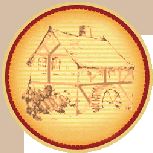by Les Saidel - September, 2010
For all you intrepid home bakers out there who have tried to duplicate your success in baking with white flour, to baking with alternative flours such as whole wheat, rye or spelt and have met with abject failure or the results have been less than stellar, read on.
Whole grains, or non wheat grains such as rye, spelt etc. have undeniable health benefits, but they also require different treatment than white flour. The basic mistake people make is simply substituting these other flours in white flour recipes and expecting the same or similar results. This usually doesn't happen, for reasons that will soon become apparent.
Let's start with whole wheat flour. As everyone knows, whole wheat flour is healthier than white flour and for this reason many have switched to using whole wheat baked products. To obtain successful results when baking with whole wheat flour you need to know two characteristics of this flour that are different to white flour.
Firstly, whole wheat flour is more hygroscopic than white flour, in other words it absorbs more water. This means that any recipe for white flour that uses a liquifying agent such as water, eggs, fruit juice, etc. (not oil), will require a larger quantity of this liquid if you substitute whole wheat flour. The only exception is oil. Whole wheat flour contains a higher percentage of lipids than white flour and therefore contributes its own oil. Adding more oil (or margarine) on top of this will make the final product too oily or greasy. So the first rule when baking with whole wheat flour is to add more liquid - around 15% more.
Secondly, whole wheat flour takes longer to absorb the liquid than white flour. Think of couscous or falafel mix that requires soaking in water for 15 minutes so that it can absorb the water - same thing with whole wheat flour. Before kneading (for bread) or mixing (for cookies), it is advisable to incorporate the liquid together with the flour until fully incorporated, and then let it sit for 15-20 minutes. This allows full absorbtion of the liquid by the flour. You will see at the beginning that the mixture may appear a soupy, too-liquidy mess, but after this rest period (in technical terms called "autolyse"), the dough begins to cohere as the liquid is absorbed and it more closely resembles the consistency you are used to. After this rest period, you may begin kneading or mixing the dough until it is fully developed.
The second factor regarding whole whole wheat flour and bread, that makes it different to white flour, is that the bran fragments in the flour are abrasive. They act as little needles that pop the gluten network or bubbles that allow the bread to rise. This makes whole wheat dough more "fragile" than white dough and it has to be handled more carefully - it will not tolerate rough handling when you shape it or let it rise. Because of this fragility, whole wheat flour should be allowed to rise for a shorter period of time using more yeast, than white flour. Use 30% more yeast in your whole wheat dough than in white flour dough and let it rise for half the time. This abrasive factor is not significant regarding non yeasted baked items such as cookies.
If you follow these simple steps, you can obtain light, fluffy and delicious whole wheat breads and cookies, just as tasty and light as their white counterparts but twice as healthy.
The next two types of flour are rye and spelt. I have grouped them together because their characteristics are similar as is their treatment. Both these flours are low in gluten, which means that for gluten sensitive people they are a G-dsend. It also means however, that their dough structure is weaker. Gluten is the building block of a strong dough and when it is low or absent, the dough strength is adversely affected. Fortunately rye flour contains a gluten substitute called pentosans which does similar work to gluten in terms of building dough structure but not as effectively. Spelt flour contains lower amounts of gluten and no pentosans, so it is even harder to work with.
Unless health dictates force you to completely eliminate white flour from your diet, the best comprimise is to mix a small amount of white flour with the rye or spelt (like 20%) to give it back the missing strength. If no white flour is used at all, you must resign yourself to the fact that your baked products are going to be heavier and less inflated than their wheat counterparts. The trick again when using these flours is to add more water (they are more hygroscopic than white flour), to give them a rest period to absorb the liquid and to handle them with care. This will give you the optimal results that are obtainable with these flours, but you must accept that they cannot rival white flour performance in volume and texture.
In summary - add more water, use more yeast, let it fully absorb the liquid and handle with care.
So experiment and work out which combinations work best for you and here's to good health!
Les Saidel
© Copyright. All rights in the above articles are reserved to the author Les Saidel.
No part of this website or the above articles may be transmitted in any form or by any
means without permission in writing from the author.




